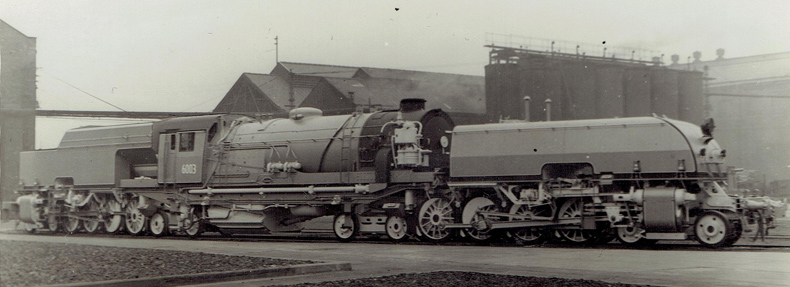Garrattfan's Modelrailroading Pages

Collection
NSWGR AD60 class
Design
No 6003 at the delivery at Gorton Works 1952. The class was conceived in the 1940s to address the increase of traffic in New South Wales. An initial order of 25 was placed in June 1949. Later this order was amended to 50 which were to be delivered in two batches of 25 each. The first two engines arrived at Sydney on 13 June 1952. No 6002 was the first one in operation, pulling its first train on 30 July 1952. Eventually the change to diesel traction cut the order short. Only 42 really entered service with spare parts delivered fir further five locomotives. Coal trasnposrts would be the mainstay of their workings. Expcpt for losses due to accidents withdrawals started in 1965 (!) with no 6042 operating the last steam hauled revenue earning service on the New South Wales Government Railways system on 22 February 1973. ComparisonThe AD60 is no doubt a very large class and currently (2019) the largest operational steam locomotive in the southern hemisphere. But how does it compare to other "super" classes which spring to mind?
It is quickly obvious that despite its visible size the class does not stand a match with the American super classes. This is mainly due to the relative low weight on the drivers (16 tons later increased to 18 tons). If I compare it to the Dutch 6300 class, a "single" 4-8-4 delivering 14,720 tractive effort, it is immediately clear that the AD60 was no more than a conventional double 4-8-4.
6042 returning from its "last run", near Tahmoor, Mar 1973, Kind permission for use on this site granted by John Hurst. In operationA Dutch saying goes "A picture says more than a thousand words". This applies partcularly to the AD60 class in full power. So instead of finding superlatives I will suffice to show them in hard working everyday life. Judge for your self. |
||||||||||||||||||||||||||||||||||||||||||||||||||||||||||||
| 60 class Garratts double-head up Fassifern Bank - Winter, 1968 | ||||||||||||||||||||||||||||||||||||||||||||||||||||||||||||
Double heading a Wangi bound coal train,1968. |
||||||||||||||||||||||||||||||||||||||||||||||||||||||||||||
PreservationCurrently four examples have survived
Source: Wikipedia No 6029While I was building my model of the AD60 no 6029 was restored to operational condition. When it finally came to life it featured as the largest operational steam locomotive in the southern hemisphere, the UP3985 being the largest of the northern hemishpere and in fact the largest in the world until "Big Boy" UP4014 hit the rails in 2019. |
||||||||||||||||||||||||||||||||||||||||||||||||||||||||||||
| Undergoing yard trials at the Canberra Railway Museum, july 2014 | ||||||||||||||||||||||||||||||||||||||||||||||||||||||||||||
Inaugural run, Feburay 2015 |
||||||||||||||||||||||||||||||||||||||||||||||||||||||||||||
References
|
||||||||||||||||||||||||||||||||||||||||||||||||||||||||||||
The modelFinal assembly took place on 7 April 2016. After fifty months in the making this project has come to a conclusion. Many things have passed in my life, mostly family matters so I won't go into detail. In the end all good things, but they hampered progress. And it was not the only project. During the AD60's build I completed four projects as well: DJH NS6228, Philotrain SHM26, BEMO BR99 651, Märklin Ae 3/6II. The AD60 could have been completed within a year if I had been able to press on after the initial quick start, but by all means do remember there is a lot of work in this model, I estimate it around 400 hours.
Broad side view. This picture is in high resolution (right click it in your browser and choose "View Picture" or similar to view it completely or alternatively download it)
And finally the other broad side view. Again this picture is in high resolution (right click it in your browser and choose "View Picture" or similar to view it completely or alternatively download it) |



Sign my
GuestBook